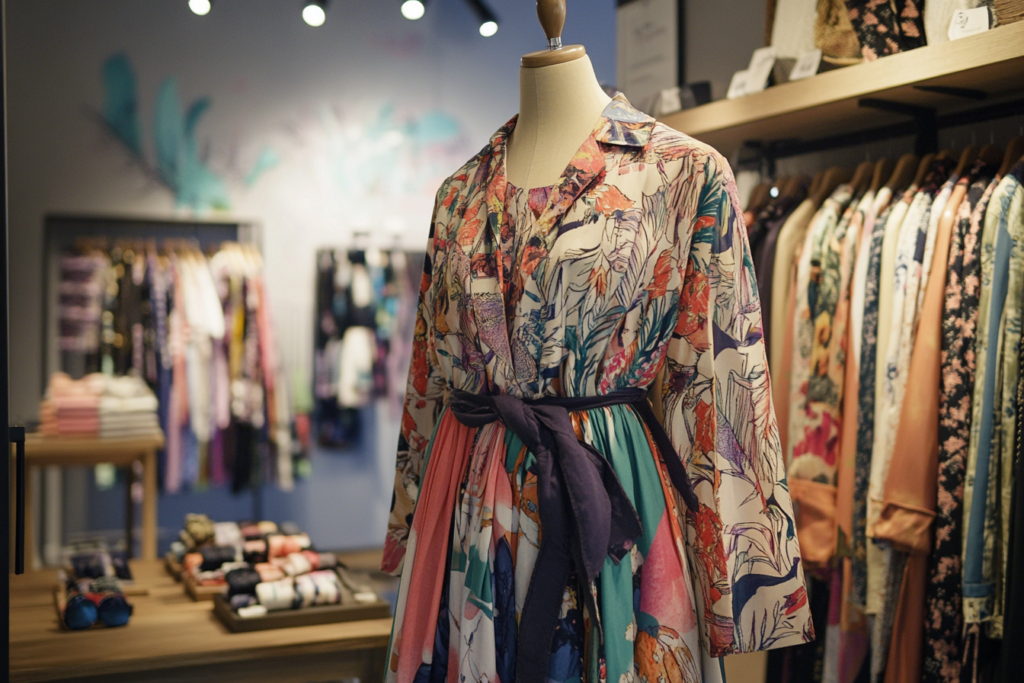Product Mix Plan: Aligning Designs for Maximum Sales and Profit
A product mix plan is a strategic framework that helps fashion companies align their product offerings with consumer demand to maximize sales and achieve financial goals. It acts as a roadmap for designers, production teams, and marketers to ensure that all clothing styles, colors, and sizes work together to meet revenue targets. The goal of a product mix plan is to generate as much revenue as possible while keeping costs under control, ensuring that the collection resonates with consumers and aligns with brand identity.
In this article, we’ll delve into the significance of a product mix plan, how it ties into sales targets, and how designers and planners use it to optimize product offerings.


What is a Product Mix Plan?
A product mix plan is a comprehensive strategy used to define the types of products a brand will produce, the styles and colors it will offer, and the quantities needed to meet sales targets. The plan is a critical tool for designers and planners, as it ensures that all products complement each other, leading to higher sales and maximizing profits.
The plan is closely linked to a company’s sales target, which is usually determined by the amount of revenue the brand expects to generate during a specific season. For example, if the sales target for the spring collection is set at $1,000,000, the product mix plan will outline how to distribute that target across various categories and styles.
| Component | Description | Icon |
|---|---|---|
| Sales Target | The revenue goal that the company aims to reach for the season, which drives all other decisions in the product mix. | 💰 |
| Styles and Categories | The various designs and types of clothing that will be produced, ensuring that they align with current trends. | 👗 |
| Fabric & Materials | Decisions about the fabrics and materials used for each design, based on cost and seasonal trends. | 🧵 |
| Color and Size Variations | A breakdown of available colors and sizes, ensuring the right mix of options for consumers. | 🌈 |
| Production Quantities | The quantity of each design, color, and size needed to meet the sales target. | 📊 |
The Role of Stock Keeping Units (SKUs) in the Product Mix Plan
An essential aspect of the product mix plan is the use of Stock Keeping Units (SKUs) to track inventory. SKUs represent the inventory of a specific product, considering all possible variations such as color, size, and style. Calculating SKUs is crucial to understand the full scope of a collection and ensures that inventory is properly managed.
For example, if Skirt 1 comes in 8 different sizes (2, 4, 6, 8, 10, 12, 14, 16) and 3 colors (lavender, bamboo, and black), the SKU count for that skirt would be:SKU count=Number of sizes×Number of colors=8×3=24\text{SKU count} = \text{Number of sizes} \times \text{Number of colors} = 8 \times 3 = 24SKU count=Number of sizes×Number of colors=8×3=24
This helps planners and designers determine how much fabric to order, how many pieces to produce, and which combinations of sizes and colors are most in demand.
| Product | Sizes Available | Colors Available | SKU Calculation | Total SKUs |
|---|---|---|---|---|
| Skirt 1 | 8 (2, 4, 6, 8, 10, 12, 14, 16) | Lavender, Bamboo, Black | 8 x 3 = 24 | 24 |
| Jacket 2 | 6 (2, 4, 6, 8, 10, 12) | Red, Blue, Green | 6 x 3 = 18 | 18 |
| Pants 1 | 8 (2, 4, 6, 8, 10, 12, 14, 16) | Black, Beige, Navy | 8 x 3 = 24 | 24 |
By calculating the SKU count, companies can ensure they have the right amount of inventory for each variation of a product, avoiding overstocking or understocking.
How the Product Mix Plan Aligns with Sales Targets
The ultimate goal of a product mix plan is to meet a specified sales target. Designers and planners must determine how much inventory is needed to generate the required revenue. This includes not only the quantity of each item but also the price point and demand for each style.
For example, the outdoor series might have a sales target of $1,000,000 for the season. The mix plan would break down how much revenue is expected from each product category (e.g., jackets, pants, skirts) and set a target for each. If Jacket 2 is priced at $100 and expected to sell 10,000 units, it would contribute $1,000,000 to the overall goal.
| Product | Price per Unit | Units Sold | Total Revenue |
|---|---|---|---|
| Jacket 2 | $100 | 10,000 | $1,000,000 |
| Skirt 1 | $60 | 5,000 | $300,000 |
| Pants 1 | $80 | 7,500 | $600,000 |
By carefully calculating the number of units to sell per product category, designers and planners can achieve their sales target and ensure the collection’s profitability.
Design Integration: How Product Mix Plans Affect Styles
Each style within the product mix plan must align with the overall theme and sales strategy. Designers often rely on market research, consumer behavior, and previous season sales data to inform their design choices. This ensures that the collection features a balanced mix of products that appeal to the target audience.
For example, in the spring outdoor series, some key styles might include:
- Jackets and Outerwear: Light and breathable fabrics, perfect for spring weather.
- Bottoms: Simple designs like shorts and leggings that are versatile and comfortable.
- Tops and Shirts: Casual yet stylish, with new prints or fabric textures to match current trends.
By offering cohesive collections with complementary styles, designers ensure that products can be mixed and matched by consumers, driving up sales of full outfits.
The Importance of a Well-Executed Product Mix Plan
A well-constructed product mix plan is essential for any fashion brand looking to meet sales targets, maximize revenue, and optimize inventory. By carefully selecting the right styles, colors, sizes, and fabrics, and by tracking sales performance using SKUs, fashion companies can ensure that their collections are aligned with consumer demand while remaining profitable.
A product mix plan not only defines which products will be created but also integrates the creative aspects of design with practical sales goals. This strategic balance ensures that each season’s collection contributes to the overall success of the business, helping brands stay competitive in the fast-paced fashion industry.




